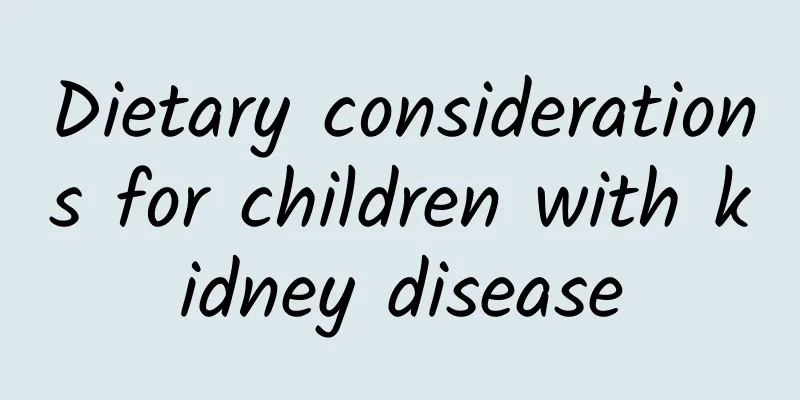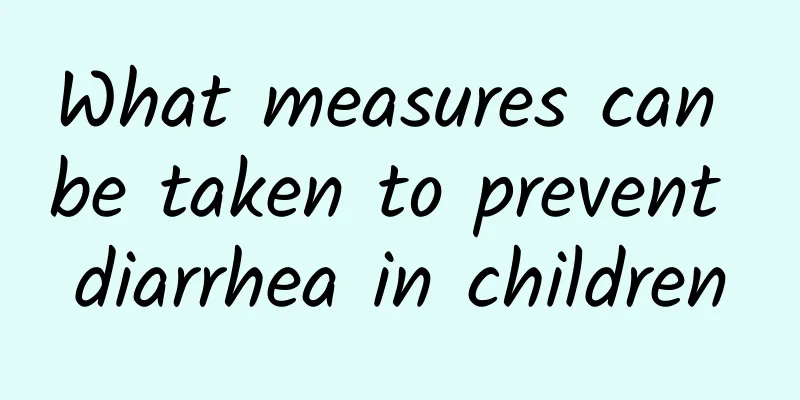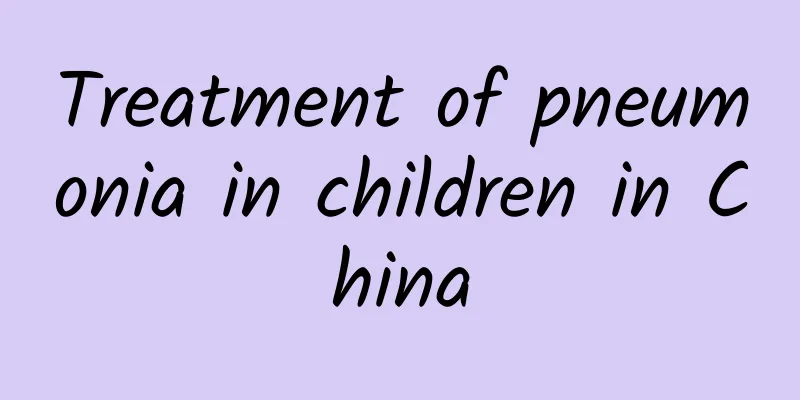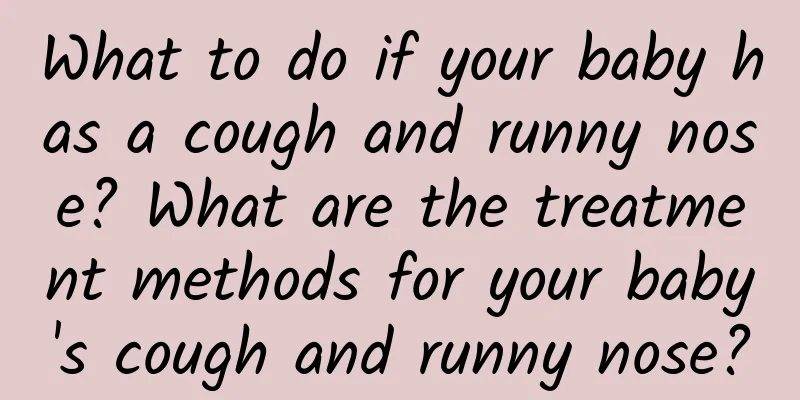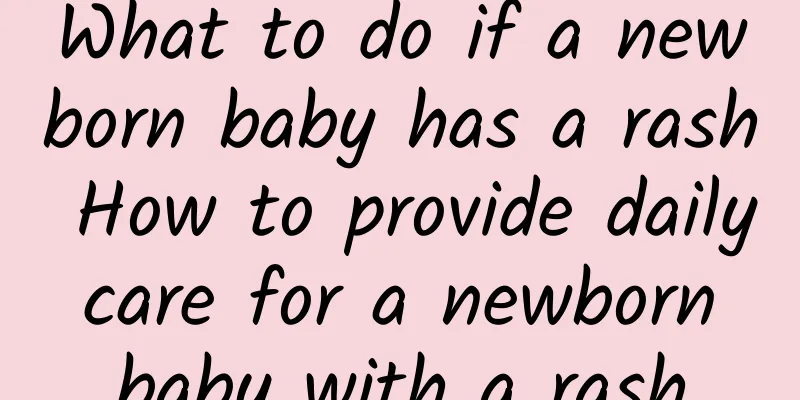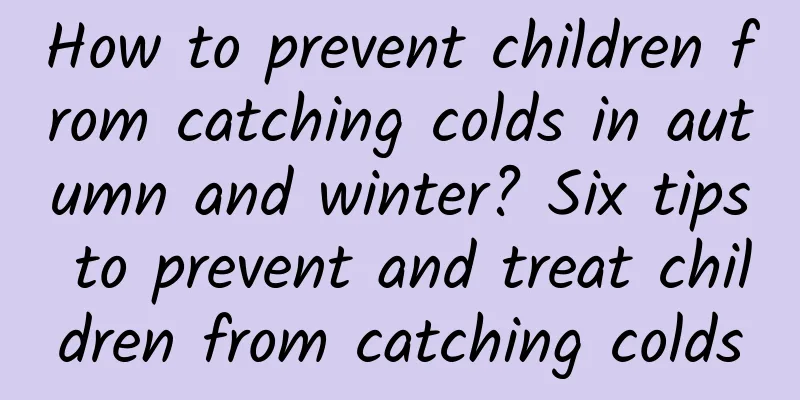How to scientifically judge a child's fever? Key points for medication for children's colds and fevers
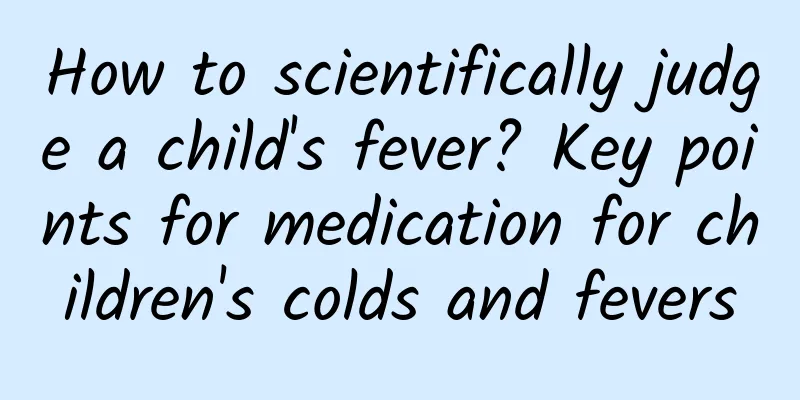
|
Cold is a common disease in children. Generally, 1 to 3 days after infection, children will experience nasal congestion, sneezing, runny nose, throat discomfort, mild cough, fever, etc. The fever varies. Severe cases may cause chills, high fever, headache, poor appetite, general fatigue, etc. How to scientifically judge children's fever? At present, most families in my country still use glass mercury thermometers, which are cheap. However, considering that glass is fragile, mercury leaking out will pollute the air and cause cumulative mercury poisoning in the human body. Now, some families also use ear canal thermometers and sticker thermometers, which are easy and fast to use. However, the pediatrician at the Children's Hospital said: Ear canal thermometers sometimes give low readings when measuring the temperature of infants and young children. Choose a digital thermometer. Here are some digital thermometers: 1. The Hartmann digital pacifier thermometer produced by the German Hartmann Group is an oral thermometer specially designed for infants and young children. The bear shape and pacifier design give babies a sense of intimacy and security, and the entire temperature measurement process is completely painless. 2. Omron digital computer thermometer. 3. Taibei baby pacifier body temperature. You can go to a medical equipment store to do some research and there must be a thermometer that is suitable for your baby. Generally, the temperature of a newborn baby is measured under the armpit, but the measured data should be increased by 5 degrees. For example, if the measured data is 36.8 degrees, then the actual temperature of the baby is 37.3 degrees. When the baby is older, you can also measure it at his anus. When measured in this way, 5 points of the temperature will be deducted. For example, if the measured temperature is 37.6 degrees, then the actual body temperature is 37.1 degrees. Key points for medication for cold and fever in children Fever in children with colds is a defensive reaction of the body. It can promote blood circulation, enhance the activity of white blood cells, improve the body's resistance, and facilitate recovery from the disease. As long as the body temperature does not exceed 38.5℃, it will generally not cause harm to the body's internal environment. If the child takes medicine to reduce fever as soon as he has a fever, or even increases the dosage of antipyretics without authorization, the sick child will sweat too much, and water and electrolyte disorders will lead to collapse and shock. Some will cause a sharp drop in white blood cells and platelets, and even gastrointestinal bleeding. Abuse of antipyretic drugs will also cover up the condition and interfere with the doctor's diagnosis and treatment of the disease. Of course, continued high fever will increase the burden on the heart and blood vessels, cause cerebral cortex dysfunction, affect gastrointestinal function, and reduce the body's resistance. So once the fever occurs, when should the fever be reduced, and which antipyretic medicine should be used? The timing must be grasped and the specific situation must be treated specifically. First, a clear diagnosis must be made. Moderate and low fevers can be treated physically. If the child continues to have a high fever and the body temperature exceeds 38.5°C, you can ask the doctor for guidance and give antipyretics. Second, if the child has a history or family history of high fever convulsions, he or she needs to take antipyretics in time once a high fever occurs to prevent accidents. Third, if the child has a central fever, such as fever caused by degenerative brain diseases, hyperthyroidism, congenital ichthyosis, Sjögren's syndrome, etc., the use of antipyretics will not work. Key points of dietary regulation for baby's fever Fever is often accompanied by decreased appetite and decreased digestive function, but at the same time, the body's demand for nutrients and water increases, which is a set of related contradictions. The total energy during the fever period should not be less than 70% of the energy required by body weight, and the total amount of water should meet the upper limit of the body weight requirement. Infants should continue to be breastfed. Food choices and meals for infants who have added complementary foods or are changing breast milk should be mainly easy-to-digest and liquid foods, such as vegetable soup, egg drop soup, milk, yogurt, porridge, egg custard, etc., and they should be fed in small meals. Serve acidic fresh fruit juices such as hawthorn juice, red fruit juice, and fresh citrus juice during meals instead of canned fruit or bottled orange juice. In order to help the baby recover soon, 100 to 200 mg of vitamin C tablets can be fed daily. When the child enters the fever recovery period, according to the child's appetite, refer to the original order of adding complementary foods, and gradually add a semi-liquid diet. For young children, you can directly transition from a liquid diet to a semi-liquid diet based on milk and yogurt, such as egg custard, vegetable puree porridge, meat floss porridge, noodle soup, chicken soup noodles, wontons, dumplings, etc. In order to make up for the nutritional deficit of children during their illness, a diet that meets their total energy and protein needs should be arranged according to their age-standard weight. The proper feeding method is to increase the number of feedings rather than increasing the amount of a single feeding. |
<<: How to prevent jaundice in newborns? Pay attention to these when preventing jaundice in newborns
>>: How does breast milk jaundice come about? Beware of several causes of breast milk jaundice
Recommend
How to effectively prevent mumps
How to effectively prevent mumps? In life, the ha...
How to treat tonsillitis caused by cold in children
Tonsillitis caused by a cold in children needs to...
What are the preventive measures for hand, foot and mouth disease?
What are the prevention and treatment measures fo...
How to determine the cause of acute laryngitis in children
The main causes of acute laryngitis in children i...
What are the symptoms of ADHD?
Symptoms of tics include motor and vocal tics, wh...
What is the best way to treat baby's allergic eczema?
Once baby allergic eczema occurs, it needs to be ...
How many days does it take for a child to recover from mumps?
Children with mumps usually need 7 to 10 days to ...
What tests are needed for patent ductus arteriosus
What tests are needed for patent ductus arteriosu...
Can children with diarrhea use antibiotics? Beware of these hazards when using antibiotics for children with diarrhea
Because children have poor immune function, they ...
What are the symptoms of children with ADHD? 5 manifestations of ADHD
What are the symptoms of children with ADHD? The ...
What are the height and weight standards for normal children and girls? What are the main factors that affect the height and weight of normal children and girls?
With the change of concepts, many parents have be...
What are the symptoms of kidney disease in children?
What are the symptoms of kidney disease in childr...
What tests should patients with mumps undergo?
After you have mumps, you must have regular check...
What is the danger period for neonatal jaundice?
What is the danger period for neonatal jaundice? ...
What to do if your child has a cold
Cold is one of the common diseases in children, u...

